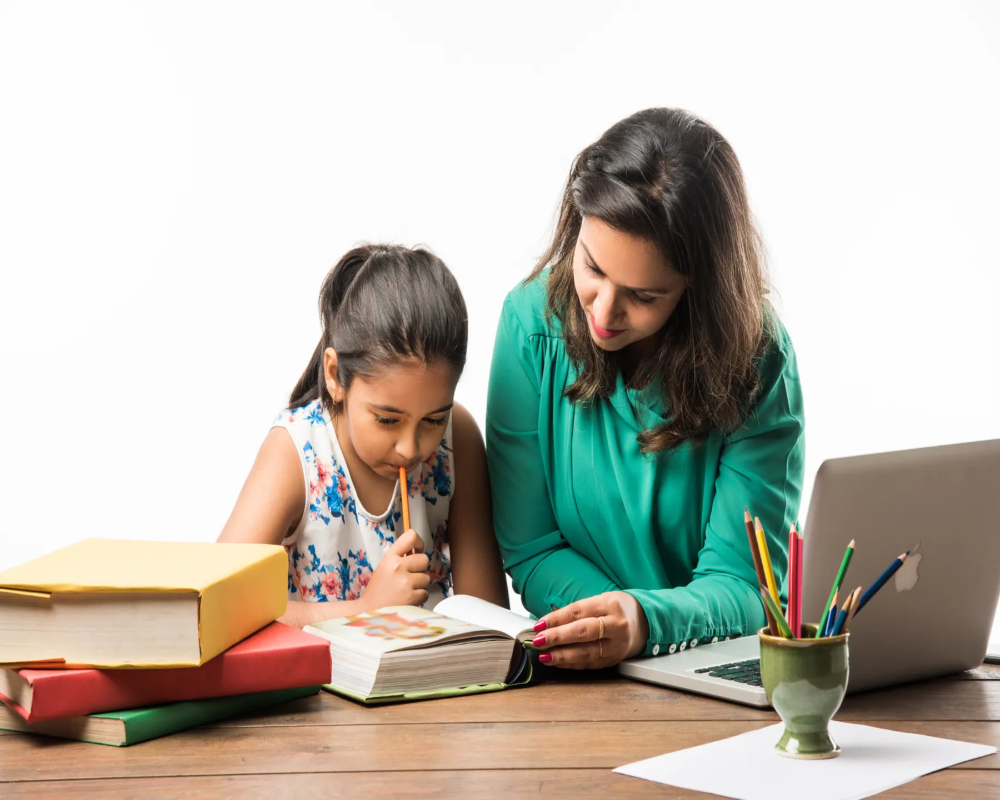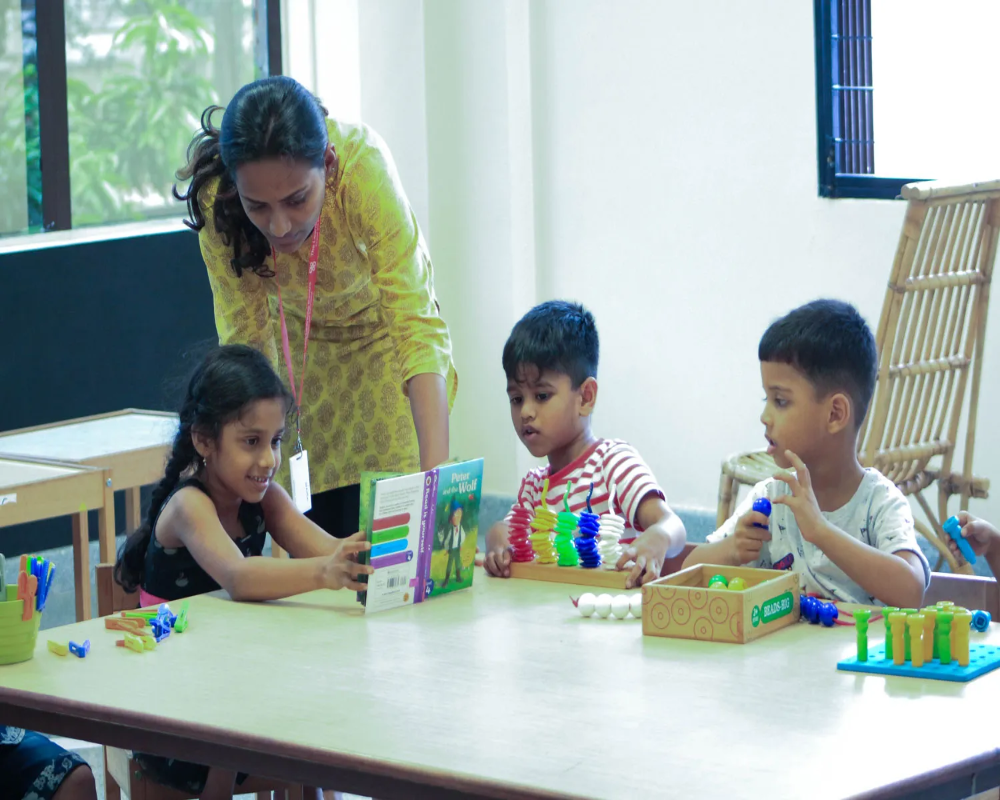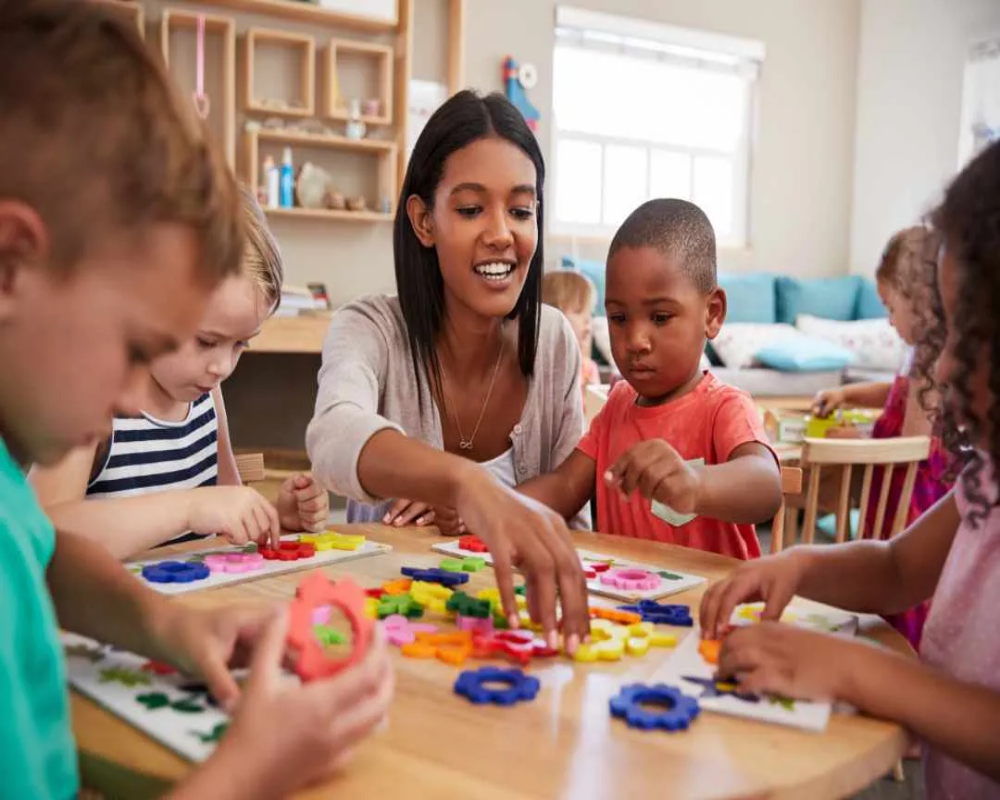Learning Disability Courses Mumbai

Source: hopetutoring
Learning Disability Courses Mumbai
Navigating the labyrinth of modern education can be daunting, especially when dealing with learning disabilities. Yet, the pursuit of knowledge has no barriers, especially when armed with the right tools and resources.
Ensuring these tools are available to every learner is the cornerstone of the philosophy at Vidhyanidhi Education Society (VES). With the diverse range of comprehensive “Learning Disability Mumbai“, VES equip educators with the specialized knowledge they need to identify, understand, and effectively help students with learning disabilities.
Learning Disability Courses Mumbai at VES empowers educators to turn classrooms into inclusive spaces of learning, thus making a real difference in the lives of students with learning disabilities.
Table of Content
- Career Scope of Learning Disability Course
- Benefits of Pursuing Learning Disability Courses
- Online Courses on Learning Disabilities in India
- Eligibility & Qualification for Learning Disability Courses
- Duration of Learning Disability Course
- Spld Qualification Distance Learning
- Teaching Strategies for Specific Learning Disability
- Teaching Techniques for Dyslexia
- Teaching Strategies for Students with Dysgraphia
- Instructional Strategies for Students with Learning Disabilities

Source: browngirl
Career Scope of Learning Disability Course
Vidhyanidhi Education Society extends an internationally recognized Diploma in Learning Disability Courses in Mumbai, opening a spectrum of vocational possibilities in this domain.
Exploring some of these Career Scope of Learning Disability Course are:
Special Needs/Remedial Educator
- Endeavor with children confronted by specific learning difficulties
- Design personalized educational blueprints, bolstering students’ learning journey
- Apply diverse pedagogical methodologies to facilitate comprehension
Individual Support Teacher
- Deliver personalized assistance to special needs children within the classroom setting
- Cooperate with fellow educators to ascertain the fulfilment of students’ requirements
- Aid students in comprehending directives and engaging in academic pursuits
Special Education Caregiver
- Extend physical and emotional backing to children with special needs
- Aid in daily chores, encompassing feeding, clothing, and grooming
- Join forces with healthcare and educational experts to guarantee optimal childcare
Founder of a Center for Special Needs Children
- Inaugurate an educational hub exclusively for special needs children
- Propose various educational courses and therapies to enable children to attain their utmost potential
- Forge a nurturing and inclusive ambience for children
Champion for Academically Challenged Special Needs Children
- Identify and support children grappling with academic disciplines
- Forge personalized learning schemes to aid children in surmounting obstacles
- Deploy diverse pedagogical methodologies to facilitate understanding
Collaborator with Education-oriented NGOs
- Align with NGOs to offer educational and therapeutic backing to special needs children
- Conceive and execute programs to help children achieve their highest potential
- Promote awareness concerning the necessities of special needs children.
Benefits of Pursuing Learning Disability Courses
Partaking in Learning Disability Courses Mumbai at Vidhyanidhi Education Society (VES) extends a variety of benefits catering to individuals aspiring to prosper in the learning disabilities field.
Prime Benefits of Pursuing Learning Disability Courses Electing VES include:
- Comprehensive Acceptance of the courses.
- Expedient Course Delivery.
- Absence of Traditional Examinations.
- Fair Fee Outline.
- Developed by Active-On-Field Psychologists.
- Direction from Skilled Mentors.
- Supply of Internship Reference Correspondence.
- Internationally accepted Certificate.
In retrospect, opting for Learning Disability Courses Mumbai from VES provides you with an encompassing educational platform and copious career privileges, helping you attain your professional visions.
Online Courses on Learning Disabilities in India
Vidhyanidhi Education Society (VES) provides holistic and knowledge-rich Online Courses on Learning Disabilities in India, promising to arm candidates with the crucial understanding and abilities to emerge as accomplished experts in this domain.
By harmonizing the comfort of virtual learning with the flexibility in the course timeline, the online certificate Learning Disability Courses Mumbai serves as an excellent pathway for those committed to establishing their careers in this realm.
Enrollment in VES’s online certificate Learning Disability Courses Mumbai offers a spectrum of significant benefits:
- Comfortable and adaptable educational environment.
- Economical fee structure.
- Supervision from expert mentors.
- In-depth course material.
- Digitally archived classes and video content.
- Recognition of internship.
- Continuous online assistance.
Call here at 9321024137 / 9869866277 for a better understanding of the course.
For Downloading the brochure click here
Eligibility & Qualification for Learning Disability Courses
Vidhyanidhi Education Society’s Eligibility & Qualification for Learning Disability Courses Mumbai for its Diploma enrollment entails a 10+2 certification from a credible board or university and an eagerness for teaching. Pre-existing experience or insight into learning disabilities isn’t an enrollment necessity for this course.
Duration of Learning Disability Course
The Duration of Learning Disability Course in Vidhyanidhi Education Society (VES) comes with a period of one year, but it also provides a Fast Track mode for those learners who prefer expedited completion. This adaptability allows students to juggle their individual and work-life responsibilities while continuing to gain fresh expertise and insight.

Source: brainbalance
Spld Qualification Distance Learning
Vidhyanidhi Education Society (VES) offers an elaborate and highly tactical Spld Qualification Distance Learning program, aptly meeting the rising demand for skilled and enlightened professionals in learning disabilities. The course delivers a flexible and suitable learning journey leveraging online and distance learning platforms.
The VES curriculum is crafted to endow learners with a thorough understanding of the characteristics, manifestations, and types of learning disabilities, screening and intervention approaches, inclusive education, and assistive technology.
The course, directed by experienced mentors and supplemented with pre-recorded lectures and video content for each module and topic, enables self-driven and comfortable home learning. Step into VES today and embark on a satisfying career trajectory in the field of learning disabilities.
Teaching Strategies for Specific Learning Disability
When it comes to teaching students with specific learning disabilities (SLD), it’s essential to implement strategies that address their unique needs and support their learning process.
Here are some effective Teaching Strategies for Specific Learning Disability:
Individualized Education Program (IEP):
Develop an IEP for each student with SLD, outlining their specific learning goals, accommodations, and modifications. Collaborate with parents, special education professionals, and other relevant stakeholders to create and update the IEP regularly.
Multisensory Instruction:
Engage students with SLD through multiple senses simultaneously. Incorporate visual aids, manipulatives, hands-on activities, and technology-based resources to reinforce concepts and enhance learning.
Differentiated Instruction:
Adapt and modify instructional materials, methods, and assessments to accommodate the diverse learning needs of students with SLD. Provide various ways for students to access information, demonstrate understanding, and participate in class activities.
Explicit Instruction:
Break down complex skills or concepts into smaller, more manageable phases. Clearly explain and demonstrate each phase, providing explicit and direct instruction. Use modelling, guided practice, and opportunities for independent practice to reinforce learning.
Assistive Technology:
Integrate assistive technology tools into the classroom to support students with SLD. These tools may include text-to-speech software, speech recognition programs, graphic organizers, and apps designed for organization and study skills.
Peer Tutoring and Cooperative Learning:
Encourage peer collaboration and cooperative learning activities. Pair students with SLD with their peers who can provide support, clarify instructions, and reinforce learning. This nurtures a constructive and all-encompassing learning environment.
Chunking and Organization:
Present information in smaller, organized “chunks” to facilitate understanding and retention. Break down tasks into manageable steps and use visual aids, such as checklists or graphic organizers, to help students organize their thoughts and work.
Scaffolded Support:
Provide scaffolds and supports to assist students with SLD as they work towards independence. Gradually reduce the level of support as they gain confidence and skills. This could include guided notes, sentence starters, or step-by-step instructions.
Positive Reinforcement and Feedback:
Recognize and reinforce students’ efforts and achievements. Provide specific and constructive feedback, focusing on their strengths and areas for improvement. Use praise, rewards, and incentives to motivate and boost confidence.
Building Self-Advocacy Skills:
Teach students with SLD how to advocate for themselves, understand their learning strengths and challenges, and seek appropriate accommodations or support when needed. Encourage them to communicate with teachers and express their needs.
Remember that these strategies should be tailored to the individual needs of each student with SLD. Regular assessment and communication with the student, parents, and support professionals are vital to monitor progress and make necessary adjustments to the teaching approach.
For enrolment details call VES at 9321024137 / 9869866277.
For Downloading the brochure click here

Source: careerguide
Teaching Techniques for Dyslexia
Teaching techniques for dyslexia can greatly benefit students with this specific learning difference.
Here are some methods for helping dyslexic pupils that can be successful:
Multisensory Instruction:
To reinforce learning, use different senses like sight, hearing, touch, and movement. For example, use manipulatives, visual aids, and hands-on activities to teach letter-sound associations and spelling patterns.
Structured and Sequential Approach:
Break down complex tasks into smaller, manageable steps. Present information logically and sequentially to help students with dyslexia grasp concepts more easily. Provide clear instructions and organize lessons in a structured format.
Phonics Instruction:
Dyslexic students often struggle with phonological awareness, which is the ability to identify and manipulate individual sounds in words. Provide explicit and systematic phonics instruction to teach letter-sound correspondences, blending, and segmenting sounds.
Multisensory Phonics Programs:
Implement evidence-based multisensory phonics programs specifically designed for dyslexic learners. These programs incorporate visual, auditory, and kinesthetic elements to enhance memory and reinforce reading and spelling skills.
Assistive Technology:
Utilize assistive technology tools to support students with dyslexia. Text-to-speech software, speech recognition tools, and word prediction programs can aid in reading, writing, and spelling tasks. Electronic reading devices and audiobooks can provide alternative access to information.
Dyslexia-Friendly Materials:
Use dyslexia-friendly fonts (such as Open Dyslexic), larger font sizes, and increased line spacing to improve readability. Provide clear headings, bullet points, and visual cues to help students organize and comprehend information more effectively.
Chunking and Repetition:
Break information into smaller chunks and provide frequent repetition and reinforcement. This approach can assist dyslexic students in processing and remembering information more efficiently.
Visual Strategies:
Incorporate visual aids, such as diagrams, charts, and graphic organizers, to help students organize and represent information visually. Visual cues can enhance comprehension and memory recall.
Mnemonic Devices:
Teach mnemonic strategies to aid memory and recall. Acronyms, visualization techniques, and memory tricks can assist dyslexic learners in remembering facts, sequences, and spelling patterns.
Individualized Instruction:
Recognize that dyslexia affects each student differently. Tailor instruction to meet the specific needs of each learner. Provide additional support, repetition, or alternative learning materials as necessary.
Positive Reinforcement:
Offer encouragement, praise, and positive reinforcement to build the student’s confidence and motivation. Recognize their progress and efforts, which can contribute to a more positive learning experience.
Collaboration and Support:
Foster collaboration between teachers, specialists, and parents to create a supportive learning environment for dyslexic learners.
For More details Call / Whatsapp us at +919869546913 / +919869866277
For Downloading the brochure click here

Source: necstraining
Teaching Strategies for Students with Dysgraphia
Dysgraphia is a learning disability which involves difficulty in writing. It doesn’t denote the absence of cleverness rather children with dysgraphia can flourish with proper guidance.
Below are the Teaching Strategies for Students with Dysgraphia:
Teaching involving Multiple senses:
The involvement of multiple senses helps children learn faster and memorize well. This can involve tracing shapes in sand, using playdough to form letters, or using a writing tray filled with a thin layer of sand or rice to practice letter and number formation.
Typing:
If the child is severely affected by dysgraphia, you can allow typing instead of writing. This will put less pressure on the child and also help the child learn technological skills.
Use Graph Paper:
For math assignments, graph paper can help students align numbers and keep columns straight. Also, it can be beneficial when learning to form letters correctly.
Provide Additional Time:
Allow additional time for written assignments. The physical act of writing can be slow and difficult for students with dysgraphia. Giving them extra time reduces the stress associated with the task.
Teach Letter Formation:
Explicitly teaching the student how to form letters can be beneficial. Break down the process into clear, simple steps, and practice frequently.
Use Dictation Software:
Some students with dysgraphia might benefit from speech-to-text software. This allows them to dictate their thoughts aloud, and the software transcribes their speech into written words.
Provide Note-Takers:
If note-taking is a significant challenge, provide a note-taker, or provide a copy of the teacher’s or another student’s notes.
Differentiate Assessments:
Consider offering alternative ways for students to demonstrate their knowledge. They could provide verbal instead of written answers, create a video or audio recording, or build a model.
Explicit Instruction in Spelling and Grammar:
Students with dysgraphia can also struggle with spelling and grammar due to the difficulty in writing and revising their work. Explicitly teaching these skills and allowing the use of spell-checkers can be beneficial.
Occupational Therapy:
If available, occupational therapy can provide explicit instruction in handwriting and help to develop fine motor skills.
Build Students’ Self-Esteem:
It’s crucial to remind students that dysgraphia is not a reflection of their intelligence. Help them find their strengths and promote a growth mindset.
Instructional Strategies for Students with Learning Disabilities
It’s crucial to give children with learning disabilities the assistance and success methods they require when teaching them.
Here are some Instructional Strategies for Students with Learning Disabilities:
Understand individual needs:
Recognize that each student with a learning disability is unique and may require different accommodations or teaching strategies. Learn to understand their specific challenges and strengths.
Create a supportive environment:
Foster a positive and inclusive classroom environment where all students feel valued and supported. Encourage peer-to-peer interactions and promote a sense of belonging.
Use multi-sensory approaches:
Engage students with learning disabilities by incorporating different senses into your teaching. Utilize visual aids, hands-on activities, and auditory cues to reinforce concepts and increase understanding.
Break tasks into manageable steps:
Break down complex tasks or assignments into smaller, more manageable steps. This helps students with learning disabilities to focus and prevents them from feeling overwhelmed.
Provide clear instructions and repetition:
Present instructions in a clear, concise manner, and reinforce them through repetition. Allow students ample time to process information and ask questions if needed.
Use assistive technology:
Explore and implement assistive technology tools that can support students’ learning. These tools can include text-to-speech software, speech recognition software, graphic organizers, or audiobooks.
Offer different modes of assessment:
Provide varied assessment methods that cater to different learning styles.
Speak for themselves:
Encourage children to speak for their needs and requirements and ask for help if needed.
Foster collaboration and peer support:
Promote collaboration among students by incorporating group activities and projects. Encourage peer support and create opportunities for students to learn from and assist one another.
Communicate with parents and specialists:
Maintain open lines of communication with parents or guardians to gain insights into students’ needs and exchange information. Collaborate with specialists such as special education teachers or therapists to develop tailored strategies.
Remember, patience, empathy, and flexibility are essential when teaching students with learning disabilities. Tailoring your approach and providing individualized support will help them reach their full potential.
Learning Disability Mumbai
Join Vidhyanidhi Education Society’s Learning Disability Courses Mumbai; ignite your potential, conquer your learning dreams!
Contact details are 9321024137 / 9869866277.
For brochure link click here.
FAQ
What is specific learning disability?
Specific Learning Disability (SLD) refers to academic challenges. Vidhyanidhi Education Society provides a Learning Disability Course.
dyslexia What reading teachers need to know?
Dyslexia demands reading teachers to grasp signs, strategies, and multisensory methods for effective instruction.
Is adhd a language based learning disability?
ADHD isn't a language-based learning disability but a behavioral disorder, distinct in nature.
What is specific learning disability?
Specific Learning Disability (SLD) refers to academic challenges. Vidhyanidhi Education Society provides a Learning Disability Course.
dyslexia What reading teachers need to know?
Dyslexia demands reading teachers to grasp signs, strategies, and multisensory methods for effective instruction.
Is adhd a language based learning disability?
ADHD isn't a language-based learning disability but a behavioral disorder, distinct in nature.




